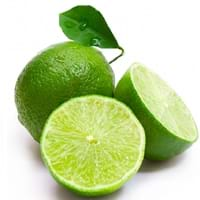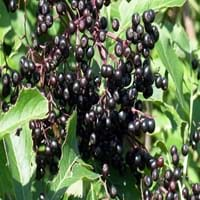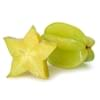Lima e Sabugueiro
Benefícios
Benefícios para a saúde
Tratamento da artrite, Tratamento de cólera, Gota tratamento, Cuidado do coração, Tratamento de piles, Tratamento de escorbuto
Prevenção do câncer, Cuidado do coração
Benefícios gerais
Curas febre, Digestivo ajuda, Cuidados com os olhos, Mantém o nível de colesterol saudável, Tratamento de resfriado comum
Propriedades anti-oxidantes, As propriedades anti-inflamatórias, Estimula o sistema imunológico, Controla os níveis de açúcar no sangue, Curas febre, Digestivo ajuda, Cuidados com os olhos, Lutas contra infecções, Tratamento da gripe, Ajuda na perda de peso, Mantém o nível de colesterol saudável
Benefícios da pele
Benefícios anti-envelhecimento, Rejuvenescimento da pele, O tratamento da acne, O tratamento de manchas escuras
Benefícios anti-envelhecimento, Rejuvenescimento da pele
Benefícios de cabelo
Promove mais longo e um cabelo mais saudável, O tratamento da caspa
Promove mais longo e um cabelo mais saudável
Alergia
Os sintomas de alergia
Dificuldades respiratória, Tosse, Irritação ocular, Urticária, Inflamação, Congestão nasal, Coriza, Erupção cutânea, Pieira
Dores abdominais, Asma, NA, Espirros, Dor de garganta
Efeitos colaterais
Chances de queimaduras solares
Diarréia, Náusea, Vómitos
Recommeded para
Mulheres grávidas
Yes
Yes
Mulheres que amamentam
No
Não disponível
Melhor hora para comer
Junto com refeição, É melhor beber água morna com cal com o estômago vazio, Não consumir durante a noite e antes de dormir
Como um lanche no final da tarde, Não consumir durante a noite e antes de dormir, Coma os frescos, evitar misturar com quaisquer outros alimentos, não comer após a refeição., Tempo de manhã (antes do almoço)
Nutrição
Porção
100 g
100 g
Carboidratos
10,50 g
99+
18,40 g
16
Fibra
2,80 g
22
7,00 g
4
Açucar
1,70 g
99+
Não disponível
Proteína
0,70 g
99+
0,66 g
99+
Proteína para Rácio Carb
0,07
20
0,04
24
Vitaminas
Vitamina A (retinol)
2,00 mcg
33
30,00 mcg
17
Vitamina B1 (Tiamina)
0,03 mg
31
0,07 mg
11
Vitamina B2 (Riboflavina)
0,02 mg
38
0,06 mg
16
Vitamina B3 (Niacina)
0,20 mg
99+
0,50 mg
30
Vitamina B5 (Ácido pantotênico)
0,22 mg
27
0,14 mg
99+
Vitamina B6 (Piridoxina)
0,05 mg
39
0,23 mg
6
Vitamina B9 (Acido fólico)
8,00 mcg
27
6,00 mcg
29
Vitamina C (Ácido ascórbico)
29,10 mg
30
36,00 mg
23
Vitamina E (Tocoferol)
0,22 mg
28
Não disponível
Vitamina K (Phyllochinone)
0,60 mcg
31
Não disponível
Licopeno
0,00 mcg
9
Não disponível
Luteína + Zeaxantina
0,00 mcg
36
Não disponível
Choline
5,10 mg
24
Não disponível
Gordo
0,20 g
33
0,50 g
18
Minerais
Potássio
102,00 mg
99+
280,00 mg
21
Ferro
0,60 mg
21
1,60 mg
8
Sódio
2,00 mg
18
6,00 mg
14
Cálcio
33,00 mg
13
38,00 mg
9
Magnésio
6,00 mg
29
5,00 mg
30
Zinco
0,11 mg
22
0,11 mg
22
Fósforo
18,00 mg
27
39,00 mg
9
Manganês
0,01 mg
99+
Não disponível
Cobre
0,07 mg
35
0,06 mg
36
Selênio
0,40 mcg
13
0,60 mcg
10
Ácidos graxos
Omega 3s
19,00 mg
25
85,00 mg
9
6s Omega
36,00 mg
40
162,00 mg
12
Esteróis
Teor de água
88,26 g
17
79,80 g
99+
Cinza
0,30 g
38
0,60 g
20
Calorias
Porção
100g
100g
Calorias em frutas frescas com Peel
Não disponível
73,00 kcal
11
Calorias em fruta fresca sem casca
30,00 kcal
23
Não disponível
Calorias em congelado Form
Não disponível
Não disponível
Calorias em forma seca
Não disponível
340,00 kcal
12
Calorias em Canned Form
20,68 kcal
26
Não disponível
Calorias em alimentos
Calorias no suco
30,00 kcal
38
200,00 kcal
4
Calorias em Jam
250,00 kcal
19
280,00 kcal
12
Calorias em Pie
420,00 kcal
2
310,00 kcal
16
Características
Tipo
Cítrico, Fruto de árvore
Baga
Estação
Todas as temporadas
Outono
Variedades
Cal, Cal persa, Kaffir cal, Cal deserto, Palestina doce de limão, Mexicano doce Lime, Mary Ellen doce Lime
Adams, Beleza Preto, Laço preto, Johns, Nova, Variegated e York
Sem sementes Variedade
Yes
No
Cor
Verde
Preto, Vermelho
Dentro de Cor
Luz verde
Magenta
Forma
Redondo
Redondo
Textura
Succulent
Suculento
Gosto
Acida, Azedar
Suculento, Doce
Origem
Índia
Europa
Cresce sobre
Arvores
Arvores
Cultivo
Tipo de solo
Argila loam, Sandy loam
Arenoso, Bem drenado
O pH do solo
6-7.5
5.5-6.5
Condições climáticas
Ensolarado, Morna para clima quente
Morna para clima quente
Fatos
Fatos sobre
- Suco de limão fresco é tão ácida que possa dissolver concreto.
- Limes são mais perfumado e ácida do que limões.
- Limes persas são quase sem sementes e Thorn menos.
- De acordo com uma crença supersticiosa, a "velha árvore" era suposto para afastar má influência e dar proteção contra bruxas.
Em Bebidas Alcoólicas
Vinho
Yes
Yes
Cerveja
Yes
Yes
Spirits
Yes
Yes
Cocktails
Yes
Yes
Produção
Top Producer
China
Estados Unidos da America
Outros países
Argentina, Brasil, Índia, México
Colômbia, Índia, México
Top do Importador
Estados Unidos da America
Não disponível
Top Exportador
México
Não disponível
Nome científico
Nome botânico
Citrus aurantifolia
Sambucus nigra
Sinônimo
Não disponível
Não Disponível
Classificação
Domínio
Eukarya
Eukarya
Reino
Plantae
Plantae
Subreino
Tracheobionta
Tracheobionta
Divisão
Magnoliophyta
Magnoliophyta
Classe
Magnoliopsida
Magnoliopsida
Subclasse
Rosidae
Asteridae
Ordem
Sapindales
Dipsacales
Família
Rutaceae
Adoxaceae
Gênero
Citrus
Sambucus
Espécies
C. aurantifolia
S. nigra
Grupo genérico
Citrino Fruta
Moschatel












